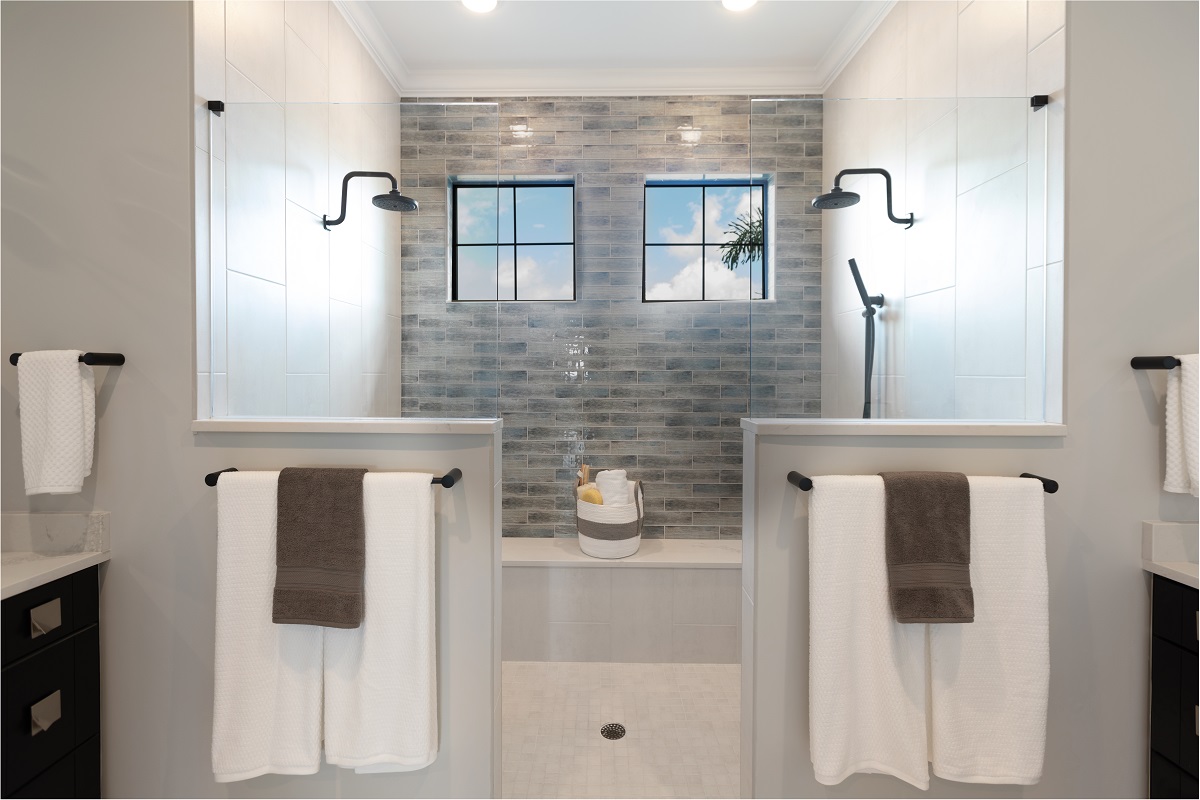
Many people focus on their home’s thermostat as a way of gauging indoor comfort. However, that’s not the only aspect of what makes a home comfortable. Humidity also plays an important role. Poor humidity control leads to indoor-air quality problems that can affect your health in many ways. Fortunately, there are techniques to sense the indoor humidity level and control it for optimal comfort and health.
Bathrooms and laundry rooms are some of the most humidity-prone spaces in a home. In particular, bathrooms have high humidity due to showering and bathing. When moisture and mold control is needed, placing a humidity-sensing fan in the bathroom is a smart decision.
As part of LifeStyle’s new HealthSmart program, we are including humidity-sensing fans in all bathrooms and laundry rooms to offer our homeowners no-effort gauging and eliminating of unwanted humidity.
Effects of High Indoor Humidity
When the indoor humidity is too high, it fuels the growth of mold and mildew. When mold grows, it releases spores. These spores float through the air. They can land and grow new colonies on an organic surface, such as drywall, wood, or paper. When a person breathes mold spores, they may have an allergic reaction. These allergic reactions, which are relatively common, often cause difficulty breathing, headaches, nasal and sinus congestion, sneezing, red eyes, and skin rashes.
The Ideal Indoor Humidity Level
The ideal indoor humidity level is 30% to 50%. This means that the home’s indoor air contains 30% to 50% of its moisture capacity. Warmer air has a higher capacity than cooler air. Humidity is measured with a wet-bulb and dry-bulb hygrometer. Many of these systems are automated, allowing them to take measurements of the indoor air’s humidity level at regular intervals.
Humidity-Sensing Fans
A humidity-sensing fan has a built-in hygrometer. It takes measurements of the home’s humidity at regular intervals. When this indoor fan measures a humidity level greater than 50%, the fan extracts humidity from the home’s air and dissipates it to the outdoors.
How a Humidity-Sensing Fan Improves Air Quality
Traditional bathroom fans only turn on when someone flips the switch. A humidity-sensing fan automates this process. By extracting the excess humidity, the fan makes the air more comfortable and reduces any biological growth. Extracting the stale, humid air and bringing in clean, fresh air also reduces the number of airborne particles. This indoor fresh air is easier to breathe, reduces allergy and asthma symptoms and reduces the risk of chronic health problems, such as headaches and heart disease.
Proper humidity control is key to health and well-being. When a home’s air is in the optimal humidity range, everyone in the household feels more comfortable. The home’s indoor air quality also improves when the humidity falls within this range.
To explore this feature and more that comprise the brand-new LifeStyle HealthSmart program, please take a look at our comprehensive features. And as always, give us a call at (321) 727-8188 ext. 2 with any questions on building a LifeStyle HealthSmart home.




